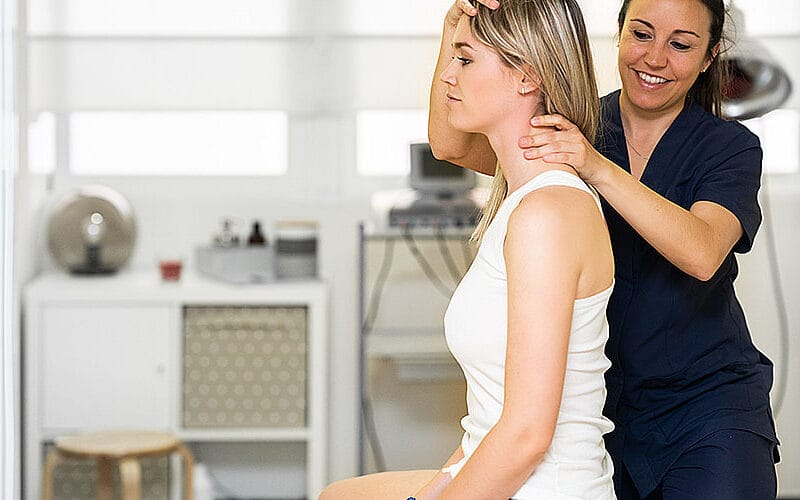Environmental allergies, often referred to as allergic rhinitis or hay fever, impact millions globally. These reactions are typically provoked by substances like pollen, mold spores, dust mites, and pet dander present in the environment. Symptoms can vary in intensity, including sneezing, nasal congestion, itchy eyes, and respiratory issues. Professional medical attention from an allergy doctor is often required for managing these symptoms effectively.
Recognizing Environmental Allergy Triggers
This article delves into methods for identifying environmental allergy triggers and offers tips for creating a home environment that reduces exposure, thereby providing relief for those affected by allergies.
Pollen
Pollen from trees, grasses, and weeds is a prevalent allergen, particularly for those with seasonal allergies. Pollen levels peak during spring and fall when plants are flowering. To pinpoint specific pollen triggers, monitor local pollen counts via weather websites or mobile apps. Limit outdoor activities during peak pollen times, typically early morning and late afternoon. Keep windows and doors closed to prevent pollen from infiltrating your home.
Mold Spores
Mold spores flourish in damp, humid conditions and can be present both indoors and outdoors. Indoors, mold commonly grows in bathrooms, basements, and areas with water damage. Outdoors, mold can be found in soil, decaying plants, and damp surfaces. To identify mold triggers, check your home for signs like musty odors, water stains, or visible mold growth. Use dehumidifiers to lower indoor humidity, fix leaks promptly, and clean moldy areas to prevent exposure.
Dust Mites
Dust mites are microscopic creatures thriving in warm, humid environments, feeding on human skin flakes. They are often found in bedding, upholstered furniture, carpets, and stuffed toys. To manage dust mite triggers, wash bedding and linens in hot water weekly, use allergen-proof covers for mattresses and pillows, and vacuum regularly with a HEPA-filtered vacuum cleaner. Consider replacing carpets with hard flooring and reducing clutter to minimize dust mite habitats.
Pet Dander
Pet dander, composed of tiny skin flakes from cats, dogs, and other pets, is a common allergen. Even hypoallergenic breeds can produce dander. To determine pet dander triggers, consider allergist Germantown for specific pets. If allergic, create pet-free zones in your home, bathe pets regularly to minimize dander, and use high-efficiency air purifiers with HEPA filters to reduce airborne allergens.
Creating an Allergy-Friendly Home Environment
Regular Cleaning
Regular cleaning is crucial for reducing allergens at home. Vacuum carpets, rugs, and upholstery frequently with a HEPA-filtered vacuum cleaner. Dust surfaces with a damp cloth to capture dust particles rather than dispersing them into the air. Wash bedding, curtains, and other soft furnishings in hot water weekly to eliminate dust mites and allergens. Minimize clutter to prevent dust buildup and simplify cleaning.
Controlling Indoor Humidity
Maintaining optimal indoor humidity helps prevent mold growth and reduces dust mite populations. Use dehumidifiers to keep indoor humidity below 50%, especially in moisture-prone areas like bathrooms, basements, and kitchens. Address leaks and water damage promptly and ensure proper ventilation in these areas to promote air circulation and prevent humidity buildup.
Allergen-Proof Encasings
Invest in allergen-proof encasings for mattresses, pillows, and box springs to block dust mites and pet dander. These covers create a barrier against allergens, reducing exposure while sleeping. Look for encasings labeled as allergen-proof or dust mite-proof, ensuring they are zippered and fully encase the mattress or pillow for maximum protection.
Air Purification
High-efficiency air purifiers with HEPA filters can effectively remove airborne allergens like pollen, mold spores, dust mites, and pet dander. Place air purifiers in commonly used areas such as bedrooms, living rooms, and home offices to improve indoor air quality and reduce allergy symptoms. Consider portable air purifiers for individual rooms or whole-house systems integrated with your HVAC for comprehensive air purification.
Outdoor Allergy Prevention
To minimize exposure to environmental allergens outdoors, check pollen forecasts before spending time outside. Wear sunglasses and hats to protect your eyes and face from pollen. Use a pollen mask or respirator when engaging in outdoor activities like gardening or yard work, and shower and change clothes immediately after coming indoors to remove pollen from your skin and hair. Choose for low-allergen plants in your garden and landscaping to reduce pollen exposure around your home.
Dietary Considerations
Diet can influence allergy symptoms. Some foods, like dairy products, wheat, soy, and processed items, may exacerbate inflammation and worsen symptoms in certain individuals. Conversely, anti-inflammatory foods such as fruits, vegetables, fatty fish, and nuts can help reduce inflammation and support immune function. Consult with a registered dietitian or healthcare provider for personalized dietary advice tailored to your specific needs and allergies.
Allergy-Proofing Your Workspace
Create an allergy-friendly workspace by keeping it clean and clutter-free. Vacuum regularly with a HEPA-filtered vacuum cleaner and wipe down surfaces with a damp cloth to remove dust and allergens. Use an air purifier with a HEPA filter to improve air quality and reduce airborne allergens. If possible, position your workspace away from sources of indoor allergens like printers, copiers, and HVAC vents.
Allergen Avoidance During Travel
When traveling, whether for business or leisure, minimize allergen exposure by researching allergen-friendly accommodations and destinations. Pack allergy relief essentials such as medications, hypoallergenic bedding encasings, and portable air purifiers. At hotels or rental properties, request allergen-proof bedding and inquire about cleaning protocols for allergens. Avoid known triggers like smoking rooms, pet-friendly accommodations, and high pollen areas during peak seasons.
Managing Allergy Symptoms
Effectively managing allergy symptoms can enhance your quality of life. Work with a healthcare provider to develop a personalized treatment plan that may include allergy medications, nasal sprays, eye drops, and immunotherapy. Use over-the-counter antihistamines or decongestants to relieve acute symptoms like sneezing, congestion, and itchy eyes. Practice relaxation techniques such as deep breathing exercises, yoga, or meditation to reduce stress and alleviate symptoms.
Seeking Professional Help
For persistent or severe symptoms, seek help from an allergist or immunologist. Allergy specialists can conduct comprehensive testing to identify specific allergens and create personalized treatment plans. Treatment options may include allergen avoidance strategies, medication management, immunotherapy, and lifestyle modifications. Proactively managing allergies can prevent complications and significantly improve the quality of life for sufferers.
Conclusion
Creating an allergy-friendly home involves identifying and minimizing exposure to common allergens such as pollen, mold spores, dust mites, and pet dander. By implementing strategies like regular cleaning, controlling indoor humidity, using allergen-proof encasings, and investing in air purification, you can reduce allergen levels in your home and alleviate symptoms for yourself and your family. If symptoms persist, consult with an allergist Manassas or healthcare provider for personalized advice and treatment options.


